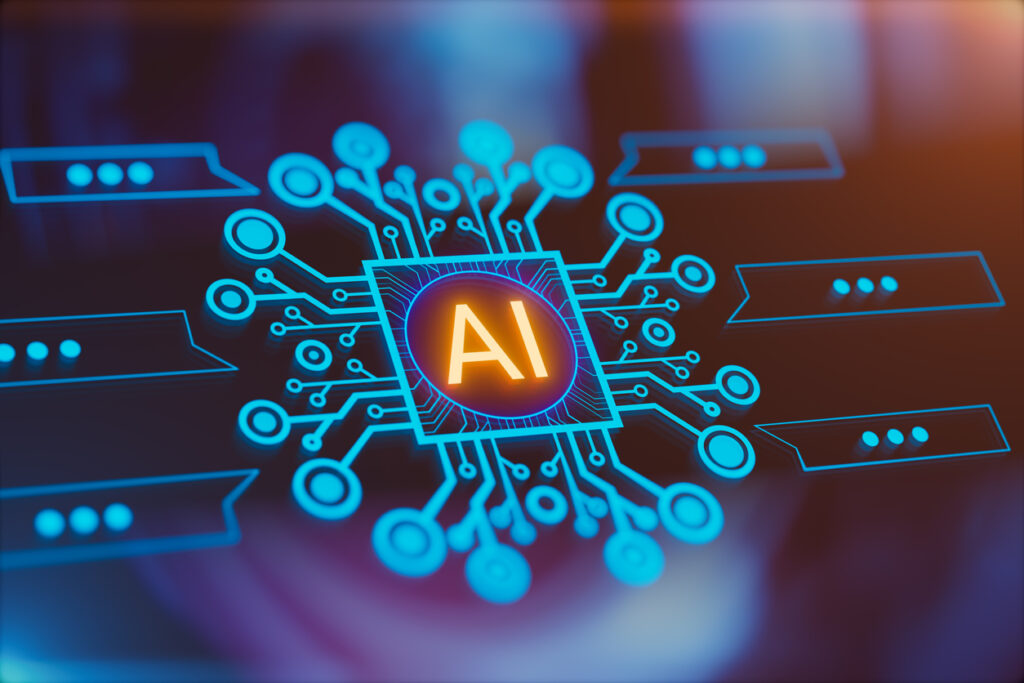By Allie Holmes and John Lorinskas
“How AI Will Reinvent the Market Research Industry”
“Advances in AI are changing the way brands gather and activate consumer insights.”
“How Artificial Intelligence Is Democratizing Market Research”
It seems everywhere you look these days, experts are weighing in on the impact artificial intelligence will have on industries far and wide—and market research is no exception. We humans seem to be enthralled with the promise of our artificial counterparts—in part out of intrigue, and perhaps, in part, with some degree of apprehension.
We noticed at least two sessions at Quirks Chicago (AI for Insights is a Game Changer and ChatGPT: What we know. What we don’t.) were devoted to understanding the role of artificial intelligence in the market research and insights space.
While it seems we are on the cusp of transformational change—and we may very well be—it’s important to understand that much of what is being considered today is not entirely new. Though the branding—and, yes, the sophistication—of the tools in question have evolved, the fundamentals of sound market research have not. In fact, this much-recently-publicized “rise of the machines” is more an evolution of trends we have been watching for nearly a decade or more than it is a sudden tectonic shift.
What was true then remains true today. Tomorrow, likely, as well.
Assessing Both the Promise and Peril of AI
What’s being discussed today as “artificial intelligence” is actually not all that different from some of the tools being enthusiastically explored in the recent past. Not that long ago, the industry was discussing developments known as “big data analysis” and “machine learning,” both of which are part and parcel of what we today consider to be AI. The promise, of course, is the ability to process limitless amounts of data in practically no time, bringing previously unforeseen efficiency and scale to market research work.
The peril lies in the over-reliance on machines and artificial intelligence to do the most critical components of market research and insights: analysis, thinking, and decoding data into fuel for decision-making and strategy.
At the risk of sounding like skeptics, it should be noted that researchers at The Martec Group have been leveraging artificial intelligence tools for a number of years now, recognizing those productivity gains referenced earlier. Yes, time is of the essence—time is money—speed to market, and all of that. But speed, volume, and productivity have never been the primary arbiter of quality when it comes to data collection, nor the ultimate determinant of its value.
Data can best be measured by its validity—not how quickly one can gain access to responses, good or bad.
Yes, machines can be deployed in the gathering of data, but that work still needs close human oversight. Humans understand and possess empathy. We can detect nuance and subtlety. We can easily detect sarcasm and “loaded language.” We process human interactions immersively—not just analyze text on a screen—ourselves sentient beings that can relate to feelings being expressed or intrinsically implied by other humans.
Artificial intelligence, for all its sophistication and advancement, still sorely lacks those human characteristics. Such qualitative input is critical to understanding the human emotions that drive consumer behaviors.
Since we believe so strongly in the value of combining qualitative research with quantitative, we find it nearly impossible to dismiss the human element when it comes to research. Qualitative is, by definition, human interaction. (At least by our definition.) Two or more humans having an open-ended dialogue cannot be replicated artificially by robots—at least not effectively…not yet!
One of the dangers that lie in the uncritical application of machine learning is its innate ability to present an air of confidence with the data it returns. In order to instill confidence in its users, AI bots are programmed to appear confident in the language they use. At times, such tools will even attempt to falsify data if they can’t source the information necessary to serve a user prompt. Keep in mind that AI is pulling data from all over the Internet concurrently and presenting it in a way that appears authoritative, so it’s very tempting for a user to trust what it returns. But much of it is unverifiable, and you can’t source it, bringing its validity into question. And, of course, the last thing you want to do is to advise a brand to act on false, incorrect, or unvalidated information.
In some cases, we’ve even seen occasions where AI bots are being programmed to perform online surveys for monetary compensation—repeated at scale to game the research system. It’s a case of “false prophets” achieving “false profits,” which can really undermine the validity and applicability of the data collected.
I Think, Therefore I Am (an Insights Asset)
Qualtrics, an experience management platform used by market researchers, recently published a survey in which they asked industry professionals which jobs they think are most at risk of being replaced by artificial intelligence. The results came as little surprise, as many seem to predict that it is the labor-intensive, administrative aspects of market research that are most poised to be either augmented or replaced by AI tools. But what will be difficult to replace are the “thinking” aspects of what insights professionals do:

As mentioned earlier, we use AI most often as a starting point—a means to achieve an end, and not the end itself. Some valuable applications of AI include the ability to efficiently extract and contextualize data from large inputs. Functions such as data collection, number crunching, and administrative processing of data are logical applications of AI. Many AI tools are good at sorting through data, filtering voluminous inputs along various criteria so it can be more readily contextualized and analyzed. But when it comes to doing the analyzing itself, that’s where humans should be put on the case.
We say it all the time: Brands are in the business of understanding and serving humans. Humans are driven by emotions. Machines will invariably fall short when trying to fully understand human actions, behaviors, and emotions. Critical analysis of things like “Voice of Customer” can only be achieved when Artificial Intelligence meets Human Intelligence to combine to create “Augmented Intelligence.”
So, yes, let’s welcome the advancement of technology that serves in the understanding of markets and the humans within them. Let’s also be careful not to outsource to machines what can only be achieved by humans, lest we learn the hard way the shortcomings of machine learning.
Allie Holmes serves as senior market analyst and John Lorinskas as project manager for Martec. Use the Contact Us form below to get in touch.




